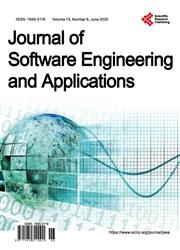MeteoRead: Client Software for Inserting Observed Atmospheric Data into MySQLTM Database and Downloading them into Different File Format
引用次数: 0
Abstract
The investigation of the tendency of climate change and its effects on ecology, economy and sociology is essential for long term policy making. The long-term measurement of the physical and chemical properties of the atmosphere with state-of-the-arts instruments provides high-quality data for these studies. The evaluated data are stored in really special file structures and formats that cannot be inserted in one common database. Moreover, the observed data usually available in ASCII format and the users sometimes need to convert them in other format. The file conversion is usually time consuming procedure and can contribute to the uncertainties. MeteoRead is a client database software that imports the observed atmospheric data e.g. wind direction, wind speed, aerosol particle concentration etc. and makes them available in different file formats, which are most commonly used in climate research. This JavaTM based program applies the Structured Query Language (SQL) functions such as table creation on a database server, data or figures insertion into the table and data selection via Graphical User Interface. The selected data can be stored in NetCDF, HDF5, DataBase or TXT file formats and the figures can be available in PNG, JPG, JPNG, PDF or GIF file formats. The program was tested on Linux and Windows platforms with different JavaTM Development Kit. The MeteoRead is planned to be developed to visualizing the annual, seasonal, monthly, daily or hourly average value of the selected data and to use the functionality of the SQL database to calculate various mathematical and statistical correlations.MeteoRead:将观测到的大气数据插入MySQLTM数据库并下载为不同文件格式的客户端软件
研究气候变化的趋势及其对生态、经济和社会学的影响对长期政策制定至关重要。用最先进的仪器对大气的物理和化学性质进行长期测量,为这些研究提供了高质量的数据。评估的数据存储在非常特殊的文件结构和格式中,这些文件结构和文件格式不能插入到一个公共数据库中。此外,观察到的数据通常以ASCII格式提供,用户有时需要将其转换为其他格式。文件转换通常是一个耗时的过程,并且可能导致不确定性。MeteoRead是一款客户端数据库软件,可导入观测到的大气数据,如风向、风速、气溶胶颗粒浓度等,并以气候研究中最常用的不同文件格式提供。该基于JavaTM的程序应用结构化查询语言(SQL)功能,如在数据库服务器上创建表格、将数据或图形插入表格以及通过图形用户界面选择数据。所选数据可以以NetCDF、HDF5、数据库或TXT文件格式存储,图形可以以PNG、JPG、JPNG、PDF或GIF文件格式提供。该程序使用不同的JavaTM开发工具包在Linux和Windows平台上进行了测试。MeteoRead计划用于可视化所选数据的年度、季节性、月度、每日或每小时平均值,并使用SQL数据库的功能来计算各种数学和统计相关性。
本文章由计算机程序翻译,如有差异,请以英文原文为准。
求助全文
约1分钟内获得全文
求助全文

 求助内容:
求助内容: 应助结果提醒方式:
应助结果提醒方式:


